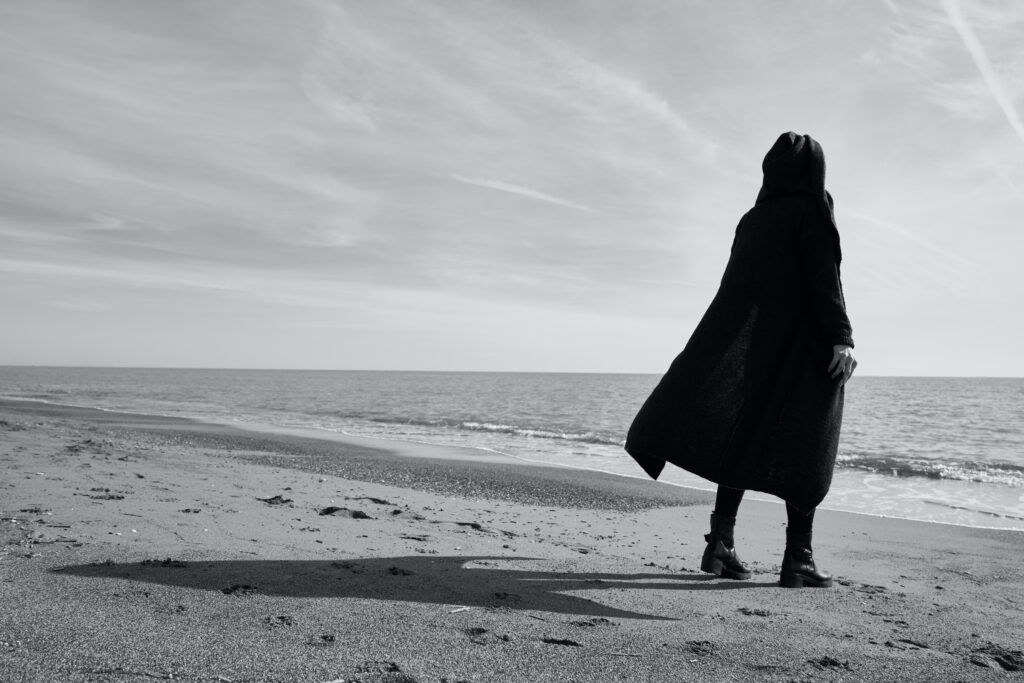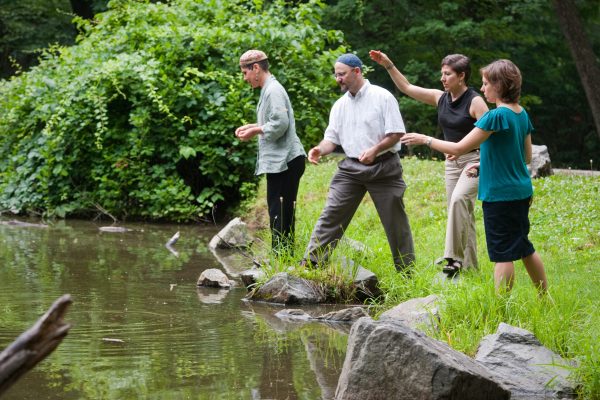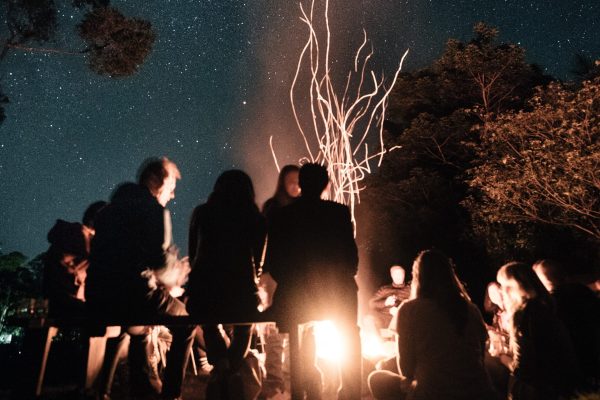Materials Needed:
– Beach that allows bonfires or a small body of water next to which we can burn things in a portable grill
– A bonfire pit or portable grill, matches, kindling, and firewood/coal
– Text handouts (including Unetaneh Tokef and Al Heit in both Hebrew and English)
– Shortbread cookies and frosting in tubes (both will be used for writing)
– Small pieces of paper and pencils
– Balloons and permanent markers
– Sandcastle buckets or building blocks and medium-sized rocks
– Masking tape
Background:
The second paragraph of the piyyut (liturgical poem) called U’netaneh Tokef famously lists a number of ways that one may perish in the year to come:
“Who by water and who by fire, who by sword, who by beast, who by famine, who by thirst, who by upheaval, who by plague, who by strangling, and who by stoning.”
Given its concluding line that “teshuvah (repentance), tefilah (prayer), and tzedakah (righteous giving) can mediate the severe decree,” this piyyut seems to suggest that those who will perish in the coming year may be dying as a consequence of their sins.
However, as expressed in the third paragraph of this prayer, Ezekiel 18:23 teaches that God does not want people who sin to die:
“Have I any pleasure at all in the death of a wicked person?” says Adonai, “and not prefer that he should return from his ways, and live?”
Because God seeks the end of sinning rather than the death of sinners, this ritual will enact the “death” or end of sins (rather than the death of sinners) in some of the ways described in Unetaneh Tokef (the first two and the last two ways). In effect, this ritual is reinterpreting the question from the second paragraph “מִי בָאֵשׁ” (who shall be destroyed by fire?) as “מָה בָאֵשׁ” (what shall be destroyed by fire?) in light of the theology expressed in the third paragraph, which may more likely resonate spiritually and intellectually with contemporary liberal Jews.
Procedure:
1. Read through the poetic prayer Unetaneh Tokef as a large group.
2. Describe the background and reason for reimagining tashlikh in relation to Unetaneh Tokef and Al Heit (another Rosh Hashanah prayer, which confesses our sins as a community).
3. If there are enough participants present, divide them into smaller groups or pairs.
4. Guide ritual participants through different physical and spiritual stations as they symbolically destroy their sins in a variety of ways, in the cyclical pattern of teshuvah (repentance, as in returning to a good point on a circle, rather than just moving forward like a straight line).
The ritual stations are as follows:
A. The group will read through the Al Het prayer and decide upon a sin from which they all regrettably derived pleasure (such as relishing in the suffering of an enemy), symbolized by the sweetness of the frosting and sugar cookie. Each person should write at least one letter of the sin, using the frosting tube on the sugar cookie. Then they express their regret for not only sinning, but for taking pleasure in any sinful activity, and they affirm:
“There is no sweetness in sin, only destruction of self, holiness, and community.”
And finally they destroy the sin by tearing apart the cookie and crumbling it into the water, as in a traditional tashlich ceremony.
B. Each individual in the group will read through the Al Heit prayer and write on a small piece of paper a sin that he or she feels could consume him or her as an individual, if left unchecked. He or she then recites:
“I have been burned but not fully consumed by this sin. May this sin be ripped apart, and the bonds with those I love not be ripped apart by my hurtful actions. May this sin be fully consumed by the fire and thoroughly eradicated as the evil of Amalek.”
Then each person rips apart the sin and tosses the small bits of paper into the fire.
C. Each individual in the group should pick a partner for this part of the ritual. One partner inflates a balloon, but does not tie it shut. He or she simply pinches the bottom shut, so air cannot yet escape. This is to create a symbolic “strangling” to replace the death by strangling mentioned in Un’taneh Tokef. But in this case, it is the strangling of a balloon which invokes the sin of lashon hara (gossip), rather than the strangling of a presumed sinner.
The second partner then uses a permanent marker to gently write “lashon hara” or “gossip” onto the balloon to enact the symbolism. Then they recite together:
“May the cruelty of our tongues and the loose blabbering of our lips cease, as the air ceases to inflate this vessel of lashon hara.”
And they slowly release the air from the balloon, while contemplating its crude similarity to speaking lashon hara and considering the need to “strangle” or take away the airtime given to lashon hara (gossip) in our communities.
D. The group will read through the Al Het prayer and decide upon a sin that stands like a tower in their lives (whether in the sense of being prominent, powerful, or long-standing). Then together they will build a tower or sandcastle onto which they will write the sin (if the tower is made of blocks, participants can write the sin on a piece of masking tape and put the tape near the top of the block tower).
“No longer will we dwell in the shadow of sin, with the pure light of goodness and righteousness obscured from our eyes. May the Rock of our lives give us the strength to topple the towers of sin that barricade our hearts seeing from the plight or perspective of the outsider.”
Then they will carefully throw rocks (or smaller building blocks) at the tower until it is destroyed. If the small rocks are unable to knock down the tower, ritual participants can use their fists as symbolic “rocks” to complete the destruction of the sin’s fortress.
After having completed the mini-ritual at each station, all groups will return to their original stations, and repeat the refrain from the prayer Un’taneh Tokef:
וּתְשׁוּבָה וּתְפִלָּה וּצְדָקָה מַעֲבִירִין אֶת רעַ הַגְּזֵרָה
(U-t-shu-va u-t’-fi-lah u-tz’-da-ka ma-a-vi-rin et ro-a ha-g’-zei-rah)
“May we turn from these sins in full teshuvah (repentance), with fervent prayer, and with eagerness to carry out acts of tzedakah, so that our own actions will transform this this world, from a world of harshness to a world of compassion, from a world of ignorance to a world of enlightenment, from a world of death to a world of life renewed, and from a world where sin destroys us to a world where we destroy sin.”












